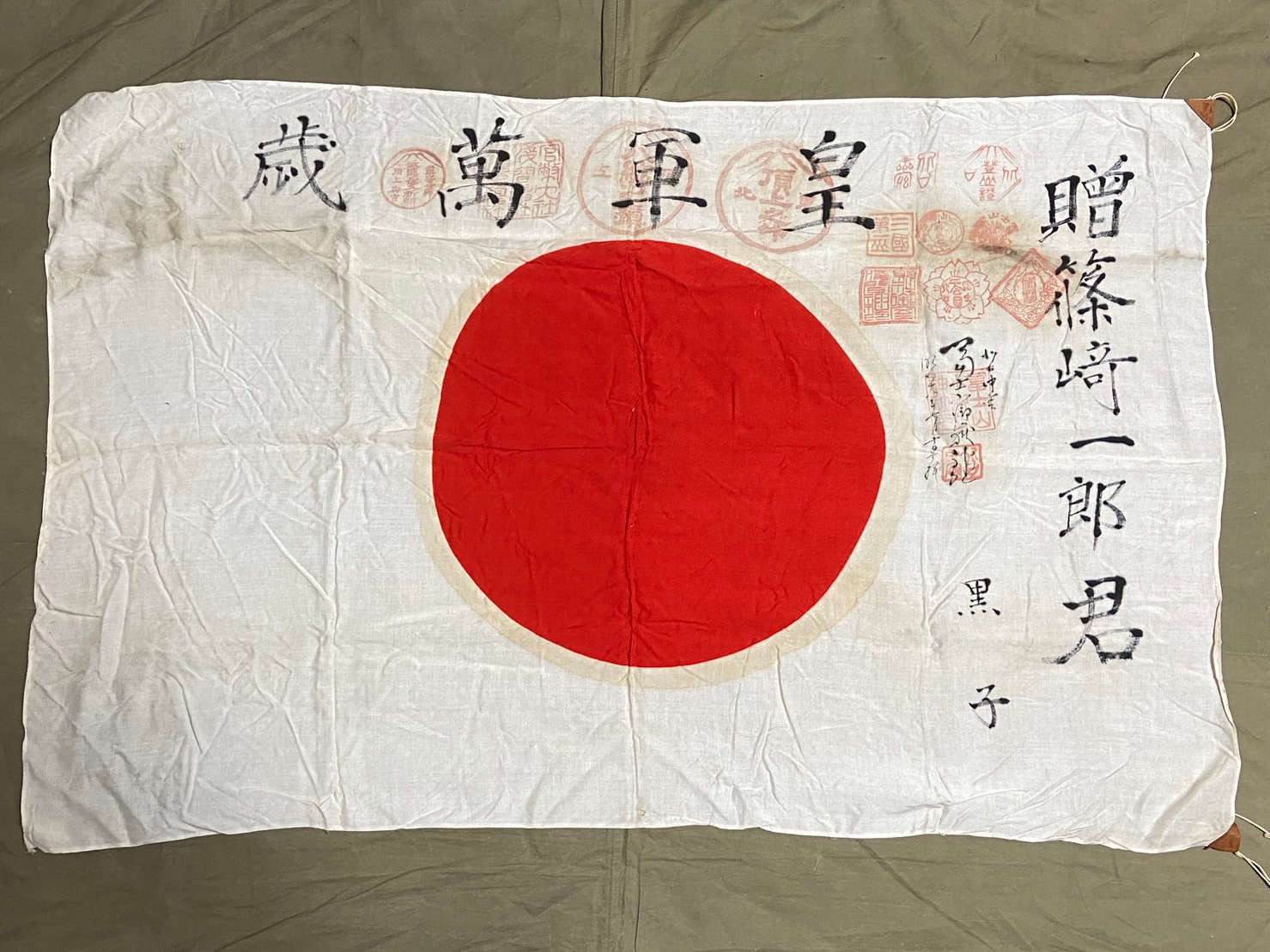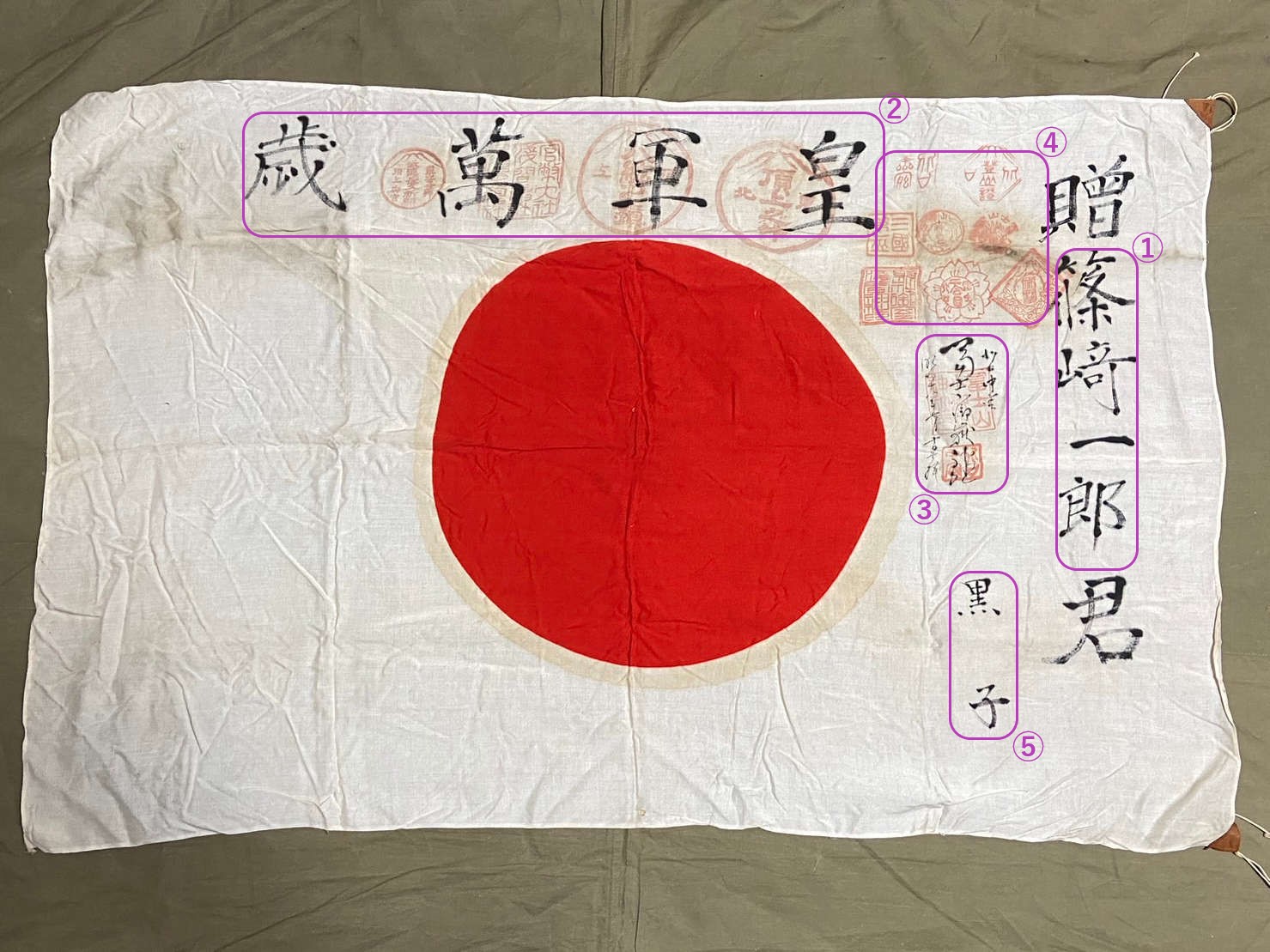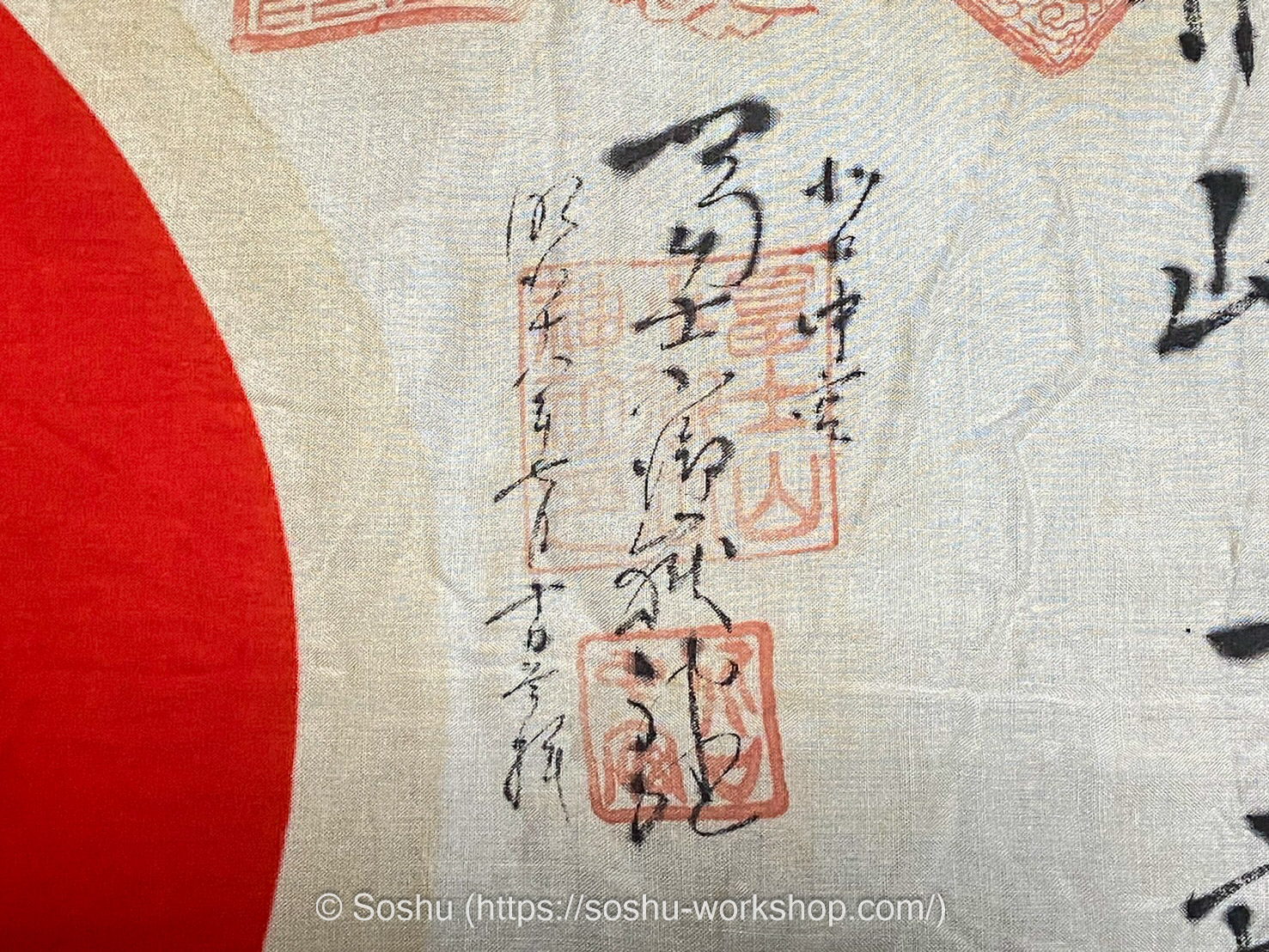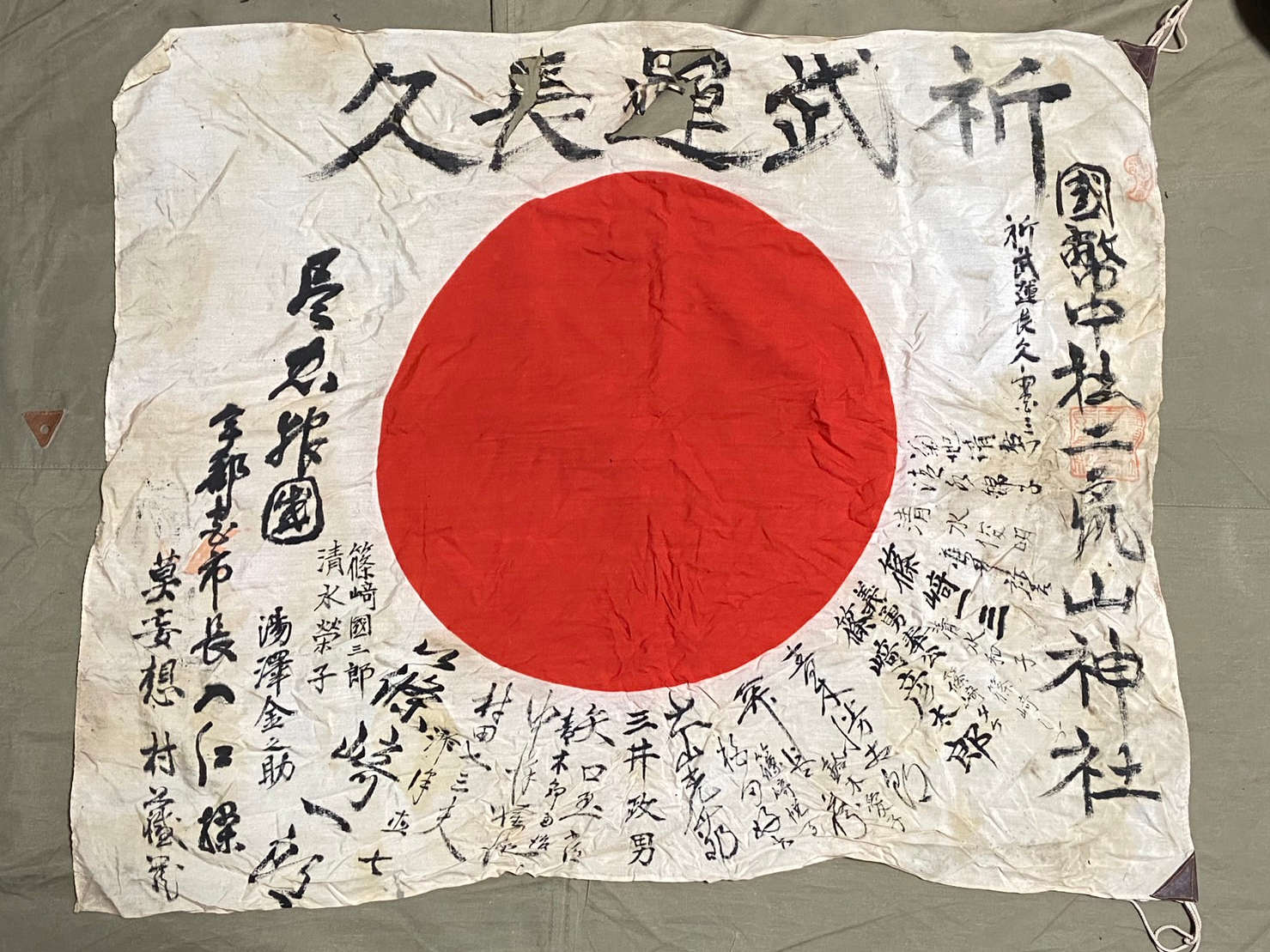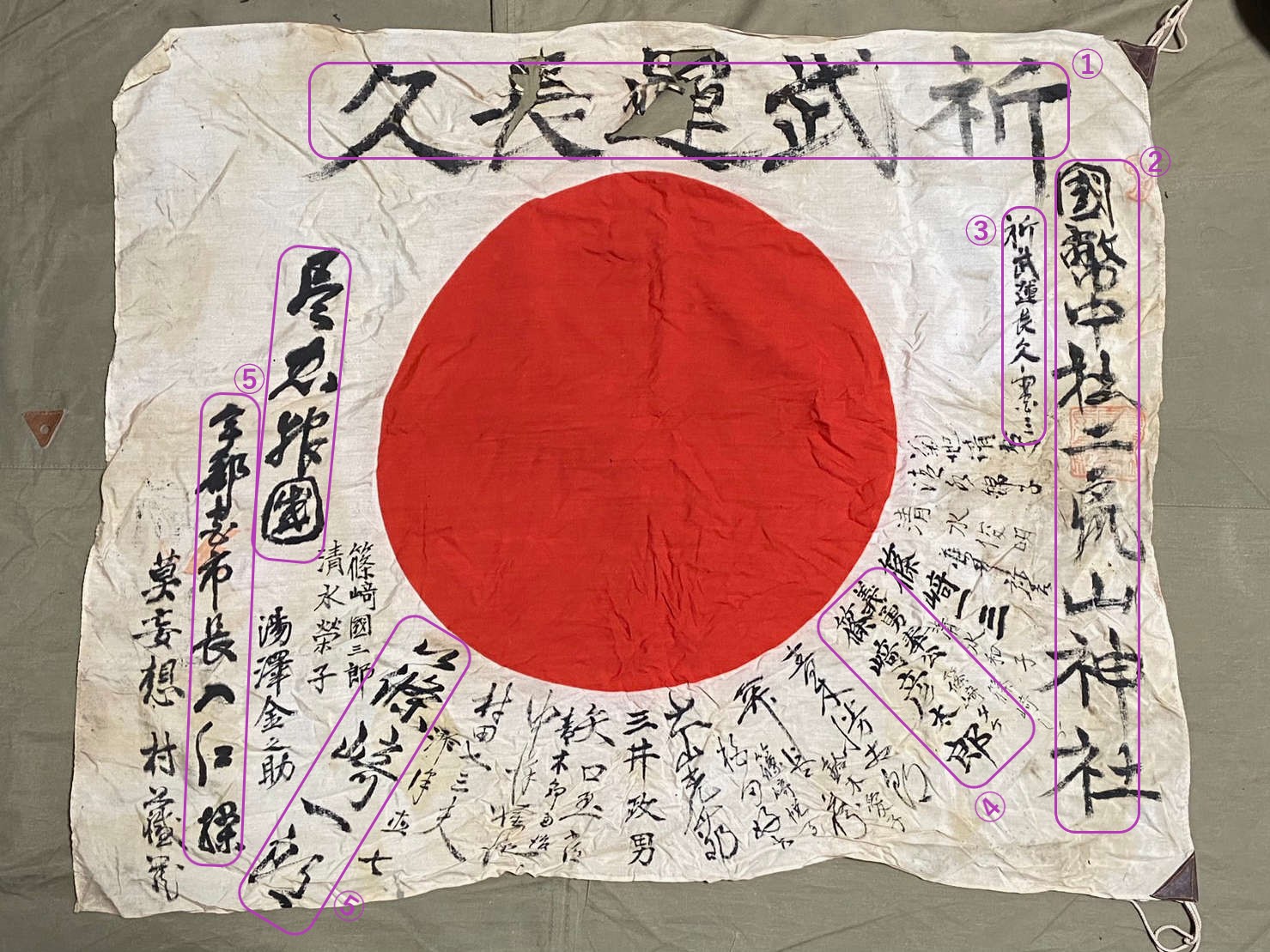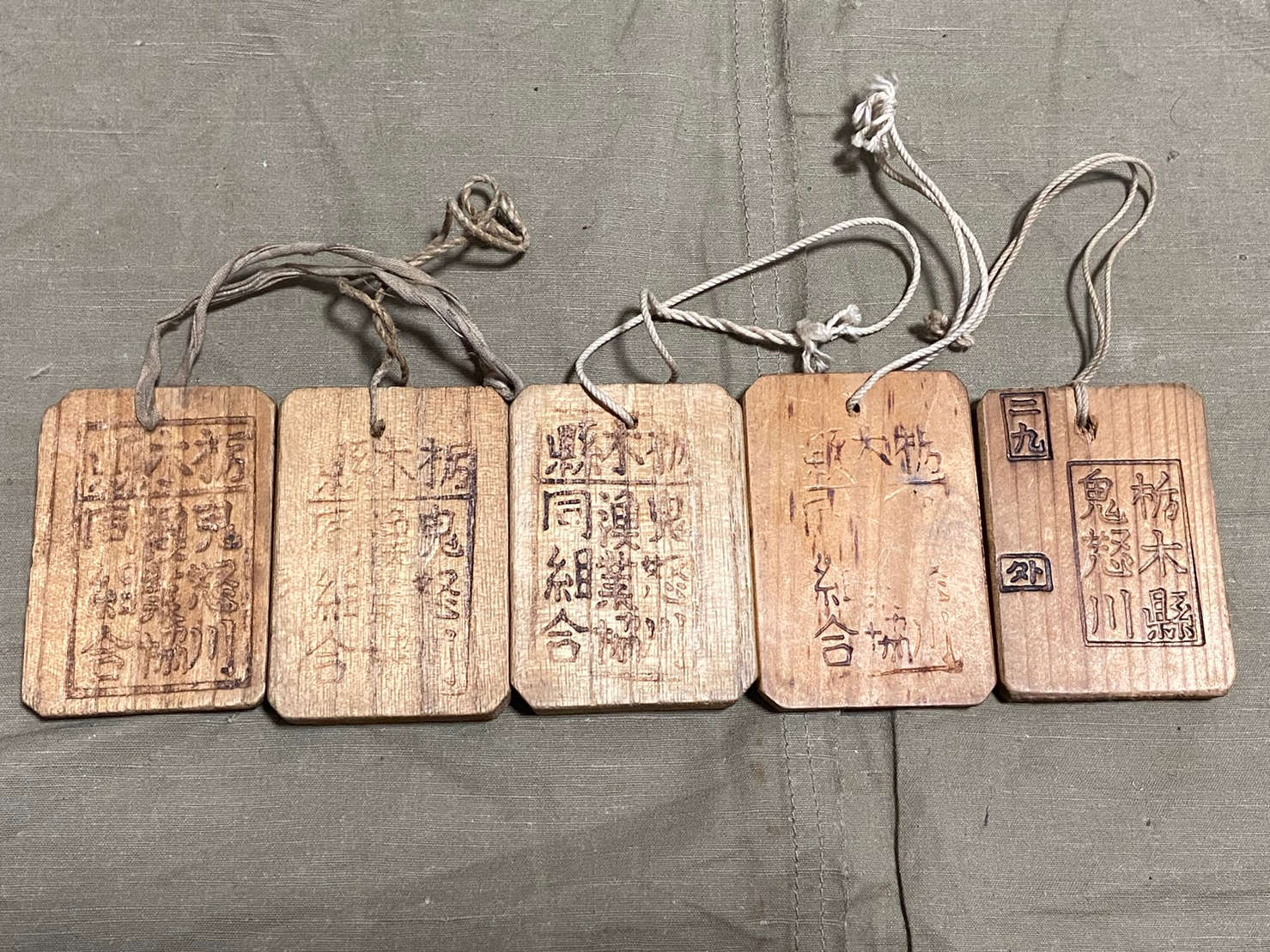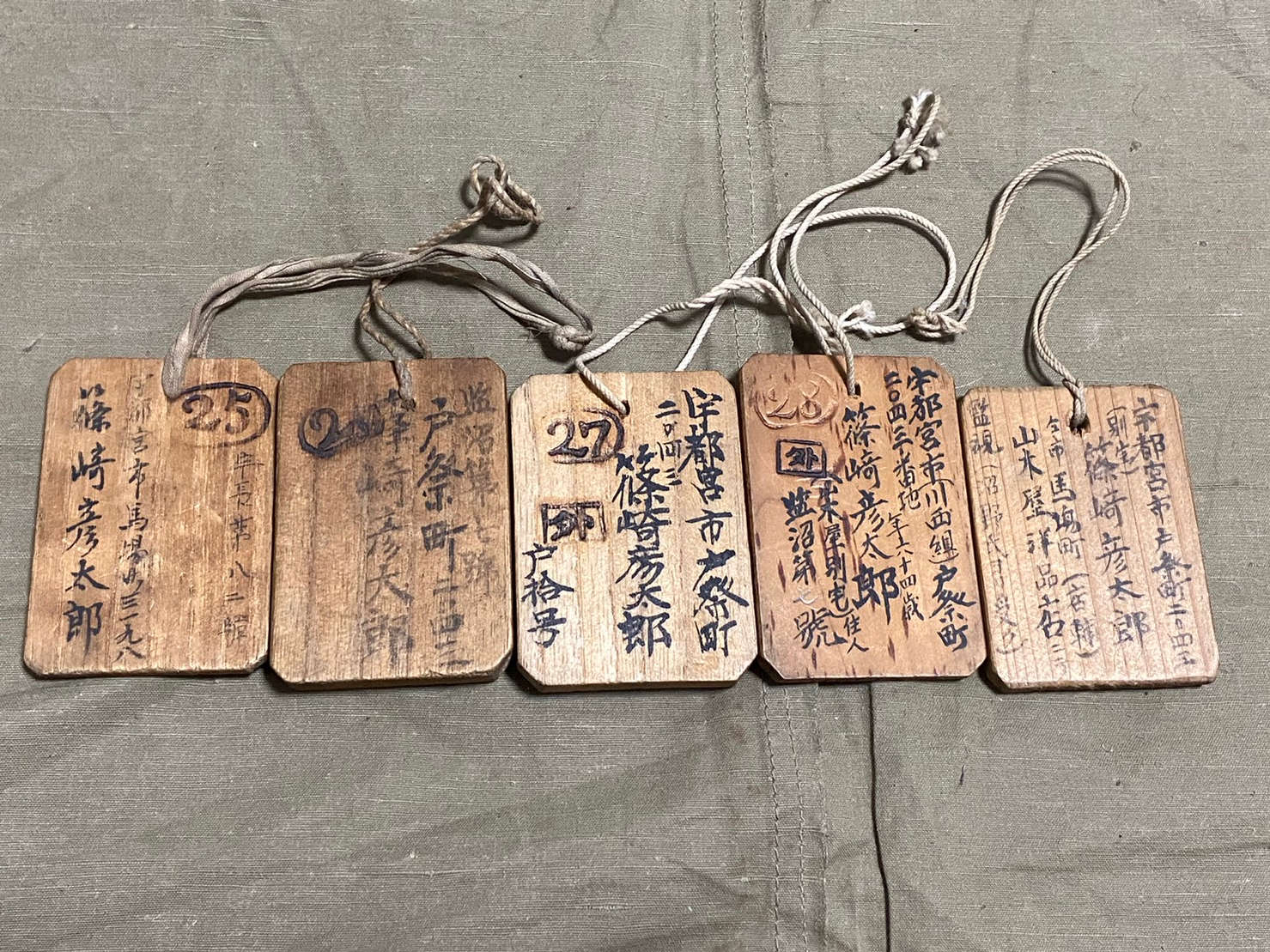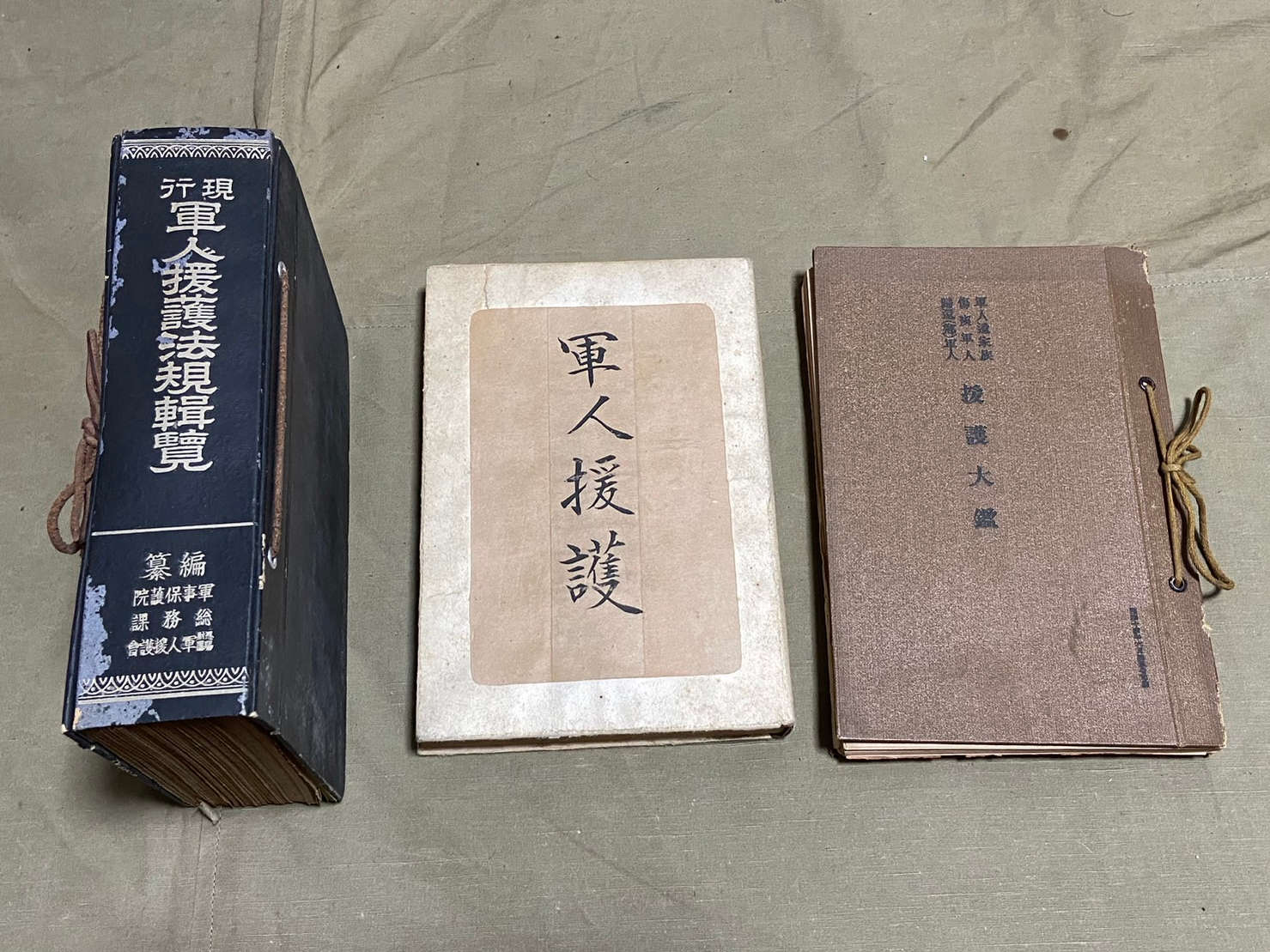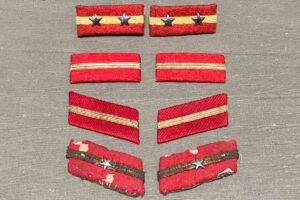I would like to introduce the signed Japanese flag, known as the Good Luck Flag in English, and other related items that I acquired at the antique market. I purchased them at an auction specifically for dealers who have a license for dealing in antiques.
We Japanese call it Shussei-Bata/出征旗, which means Deployment Flag. Enemy soldiers primarily obtained these flags from Japanese corpses or POW, so calling them “Good Luck Flag” feels rather ironic.
In countries other than Japan, writing on the national flag can be perceived as a disrespectful act towards the flag. Therefore, it might seem strange to people from other countries. There seems to have been an implicit rule among Japanese people at the time not to write on the red circle in the middle of the flag. However, although not common, there are also Good Luck Flags where characters are written on the red circle.
This time, two Good Luck Flag, five certificates from the Fisheries Cooperative Association, and three books on military support all came up simultaneously. All of these items are from the same household. The fact that multiple items surfaced together provided additional information beyond what could be discerned from just the signed flags.
Insights from these Items
First, let’s examine the information gleaned from the first Good Luck Flag. I wrote down the key points below, so please refer to them in conjunction with the circled numbers on the second image.
- The person who received the Good Luck Flag and departed for the war was Ichiro Shinozaki (篠﨑一郎/Shinozaki Ichirō).
- The characters “皇軍萬歳” (Kōgun Banzai/Cheers for Imperial Army) are written at the top.
- The red stamp indicating the Visitation Date
- “北口中宮 富士小御嶽神社 昭和十八年七月十日参拝” means “North Entrance Komitake Shrine at Mt. Fuji, visited July 10, 1943”.
- The commemorative red stamps from many shrines.
- Based on the characters such as “富士二合目北口” (Fuji Second Station North Entrance), “登山證” (Climbing Certificate), “北東頂上之印” (Stamp of the Northeast Summit), and “官幣大社浅間神社” (Sengen Taisha Shrine), it is presumed that his family or relatives climbed Mount Fuji, obtained a climbing certificate, and prayed for safety while visiting the Asama Shrines at around Mount Fuji.
- Sengen Shrines are dedicated to matchmaking and marital harmony.
- Name of the Presenter: “黒子” (Kuroko, name of a woman).
The person preparing this Good Luck Flag is a woman named Kuroko (黒子). I imagine that Kuroko may be either Ichiro’s wife or girlfriend. While it’s possible that based on this Good Luck Flag alone, Kuroko could be Ichiro’s mother, another signed flag suggests that Ichiro’s mother is someone else.
At first glance, this Good Luck Flag may not have many signatures, but it is evident that a considerable amount of effort has been put into its preparation. Kuroko appears to have prayerfully visited each shrine around Mount Fuji, wishing for Ichiro’s safety. The visitation date is recorded as July 10, 1943, suggesting that Ichiro’s deployment was expected around July to August 1943.
Next, there is the second Good Luck Flag. Relatives and acquaintances wrote their names on it, praying for a safe return. The large characters at the top have degraded and torn. I wrote down the key points below, so please refer to them in conjunction with the circled numbers on the second image.
- “祈武運長久” (Buun-Chōkyū-wo-Inoru/Pray for long-lasting martial fortune.) are written at the top. In pre-war Japan, there was a practice of writing horizontally from right to left.
- “国幣中社二荒山神社” (Kokuheichūsya-Futaarayama-Jinja/Futaarayama Shrine)
- “国幣中社” (Kokuheichūsya) is a term indicating the rank of a shrine, and “二荒山神社” (Futaarayama-Jinja) is a shrine located in Utsunomiya City, Tochigi Prefecture.
- Futaarayama Shrine is a deity for inviting blessings and matchmaking. Is it reading too much into it to imagine that Kuroko chose the matchmaking deity in the hope that Ichiro would return safely and they could marry, before Ichiro’s departure?
- It can be inferred that prayers were offered here as the shrine’s seal is also stamped on the flag.
- “祈武運長久 黒子” (Buun-Chōkyū-wo-Inoru, Kuroko/Pray for long-lasting martial fortune, from Kuroko)
- It is speculated that Kuroko took charge as the organizer and created this Good Luck Flag, judging from the modest and small-sized characters, as well as the position and orientation of the text.
- “義勇奉公 篠﨑彦太郎 篠﨑タケ” (Giyū-Hōkō, Shinozaki Hikotarō, Shinozaki Tah-keh / Selfless service for the nation, Hikotarō Shinozaki, Tah-keh Shinozaki)
- Based on the information provided on the certificates from the Fisheries Cooperative Association later mentioned, it is speculated that Hikotarō is the father, Tah-keh is the mother of Ichirō.
- “尽忠報國 宇都宮市長 入江操” (Jinchū-Hōkoku, Utsunomiya-Shichō Irie Misao / Loyal service to the nation, Mayor of Utsunomiya City, Misao Irie)
- Misao Irie served as the Mayor of Utsunomiya City from December 31, 1940 (Showa 15) to December 30, 1944 (Showa 19).
- The date of visit recorded on the other Good Luck Flag, July 10, 1943 (Showa 18), also coincides with the timeframe.
- “篠﨑一郎” (Shinozaki Ichirō/Ichirō Shinozaki)
Here are the certificate tags from the Kinugawa Fisheries Cooperative Association in Tochigi Prefecture that came out at the same time.
- The name written on the certificate tag is “Hikotarō Shinozaki”, and the same name is also among the Good Luck Flag.
- Hikotarō’s address on the certificate tag matches the address of Ichirō, as written in the book I will introduce later. Therefore, it can be inferred that Hikotarō is the head of the Shinozaki family.
- I speculated that Hikotarō is Ichirō’s father. This assumption is based on the names “Hikotarō Shinozaki” and “Tah-keh Shinozaki” being written together in the signatures, which suggests that they are the parents.
These are three books that I got at the same time. They are related to “Military Support” and concern the laws aimed at supporting the families of deceased soldiers, wounded veterans who have been discharged, and returning soldiers whose conscription has been revoked.
- The books contain the signature of Ichirō Shinozaki, indicating that they belong to him. The presence of sticky notes and underlined passages suggests that he was researching the Military Support Law.
- Given the presence of books on military support laws from the wartime period and indications of thorough research, it is possible that Ichirō was discharged due to injury or illness before the end of the war.
- The titles of the three books from left to right are as follows:
- “Compilation of Current Military Support Laws and Regulations” (issued on April 8, 1943)
- “Military Support” (issued on March 15, 1945)
- “Military Support Guidebook for Bereaved Families, Wounded Veterans, and Returning Soldiers” (issued in June of 1939)
Analysis
The contents discerned from the historical documents are as follows:
- Ichirō Shinozaki, who lived in Utsunomiya City, Tochigi Prefecture, was deployed around July to August 1943 (Showa 18).
- He was discharged for some reason and returned to his hometown before the end of the war.
If he were my relative, it would be possible to obtain a military service record by acquiring a certificate of military service. However, I cannot confirm further than this. Therefore, from here on, it is purely my speculation.
If he was conscripted as an infantryman in the army, he might have been assigned to the division based in Utsunomiya, his hometown. When we think of Utsunomiya’s division, it brings to mind the 14th Division, which was transferred from Manchuria to Palau, or the 51st Division, which fought on the New Guinea front. However, if he enlisted after July 1943, these divisions would have already been deployed to the front lines. So, in terms of timing, he may have been assigned to the 81st Division, which was reorganized from the reserve 51st Division.
It seems likely that Kuroko is Ichirō’s sweetheart. She climbed Mount Fuji and visited Sengen Shrines, which are believed to have blessings for matchmaking, praying for Ichirō’s safe return. Furthermore, she also made prayers at the local matchmaking shrine. Fortunately or unfortunately, Ichirō was injured and may have suffered some disabilities, but he was able to come back alive. Ichirō must have married Kuroko.
Each piece of military equipment that comes into our hands should have its own history and story. Usually, we may only know as much as the name written on it, but items like the signed Japanese flag provide a wealth of information and stir the imagination in various ways.
Indeed, from our ancestors’ military equipment, various aspects of their lives and experiences become apparent. Unfortunately, many families have no interest in these items, and most are discarded as trash. As collectors, it would be beneficial for us to pass on these stories to future generations as much as possible.
